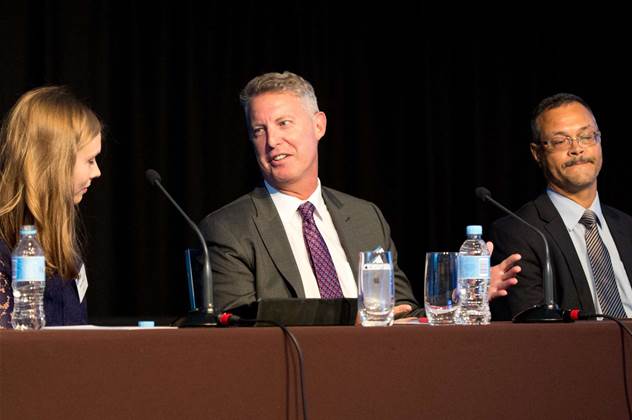NeCTAR, a finalist in the education category of the Benchmark Awards, arguably mimics the much-maligned shared services model the most.

NeCTAR is essentially a network of multi-tenant compute and storage infrastructure spread across eight Australian universities that scientists and researchers can access for free.
The project’s success - reflected in University of Melbourne’s Sendur Kathir enjoying a worthy send-off by being crowned Education CIO of the Year - was encouraging in what was otherwise a dire year for technology R&D.
What differentiated NeCTAR from shared services projects was the use of an open source framework to build scale at dramatically lower costs. There would be no vendors to negotiate complex licensing arrangements with, and no implicit trade-off attached in terms of future support for the software.
NeCTAR can take confidence that OpenStack - backed by many of the world’s largest buyers and sellers of technology - is likely to be supported for some years to come.
Further, NeCTAR didn’t replace any existing systems, but rather provided free access to a service researchers previously weren’t provided. As a result adoption was assured.
“It was remarkable that there wasn’t a lot of infrastructure to help our researchers do this very important work, and what there was had been funded piecemeal,” Kathir told his fellow finalists and CIO peers at the CIO Strategy Summit.
Managing change was as simple as convincing researchers passionate about the plan to join the IT organisation for the duration of the project, which “gave us a much better understanding of what their needs were,” he said.
A winning formula for shared services
The success of these three projects won’t guarantee, of course, that shared services disasters won’t happen again. But a clear distinction has been made between why some projects succeed and others fail.
Shared services projects have failed in the past because they had little to compete with or benchmark against, and therefore no incentive to innovate and fewer drivers for technologists to challenge red tape.
Projects often failed because their backers couldn’t make a good enough use case, and too often that was because they pursued the shared services model right up to the application level - that level at which most agencies wished to differentiate rather than conform.
But with the right incentive structures, change management plans and agency autonomy, this years’ Benchmark Awards proved that governments can achieve shared services goals, even if they don’t dare to use those words.


_(22).jpg&h=140&w=231&c=1&s=0)

.png&h=140&w=231&c=1&s=0)
_(20).jpg&h=140&w=231&c=1&s=0)



_(26).jpg&w=100&c=1&s=0)

 iTnews Executive Retreat - Security Leaders Edition
iTnews Executive Retreat - Security Leaders Edition












_(1).jpg&h=140&w=231&c=1&s=0)



